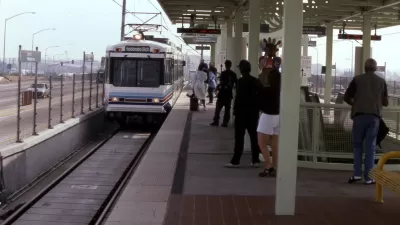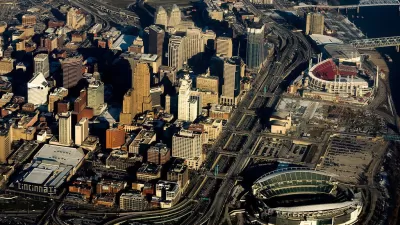What's made the difference in the trajectories of similarly-sized Midwest cities Detroit and Indianapolis? According to David Masciotra, cross-sector partnerships centered around sports entertainment have been the driving force behind Indy's success.
Indianapolis has a lot to boast about these days. With a "thriving culture scene," low unemployment rates, budget surpluses, and a reputation as a "tech hotbed," the city is enjoying a decades-long revival. "The obvious question, then, especially in the face of unmitigated fiscal devastation in Detroit, Cleveland, and many other smaller Midwest cities, is how did they do it?" says Masciotra.
"The Indianapolis plan for resurrection required much more than prayer. Beginning in the 1970s, under a visionary, Republican Mayor – William Hudnut – and Otis Bowen, a cooperative and moderate Republican Governor, Indianapolis sought to become the sports capital of the Midwest, a flytrap for business investment, and a tourist destination," he explains.
"'Top down' economic development schemes have often failed in other cities. Sports stadiums and convention centers rarely deliver on their utopic promises of business stimulation and tourism renewal, but in Indianapolis, the plan was not merely governmental investment. It was cross-sector partnership. The Indianapolis city government and the Indiana state government formed an alliance with Eli Lilly, and other large corporations in the state, to co-fund large scale projects."
"The public-private partnership proved successful not only in sports," he adds, "but also in attracting nightlife activity and encouraging entrepreneurship."
FULL STORY: Sports Teams Really Can Save a City

Planetizen Federal Action Tracker
A weekly monitor of how Trump’s orders and actions are impacting planners and planning in America.

Maui's Vacation Rental Debate Turns Ugly
Verbal attacks, misinformation campaigns and fistfights plague a high-stakes debate to convert thousands of vacation rentals into long-term housing.

San Francisco Suspends Traffic Calming Amidst Record Deaths
Citing “a challenging fiscal landscape,” the city will cease the program on the heels of 42 traffic deaths, including 24 pedestrians.

Amtrak Rolls Out New Orleans to Alabama “Mardi Gras” Train
The new service will operate morning and evening departures between Mobile and New Orleans.

The Subversive Car-Free Guide to Trump's Great American Road Trip
Car-free ways to access Chicagoland’s best tourist attractions.

San Antonio and Austin are Fusing Into one Massive Megaregion
The region spanning the two central Texas cities is growing fast, posing challenges for local infrastructure and water supplies.
Urban Design for Planners 1: Software Tools
This six-course series explores essential urban design concepts using open source software and equips planners with the tools they need to participate fully in the urban design process.
Planning for Universal Design
Learn the tools for implementing Universal Design in planning regulations.
Heyer Gruel & Associates PA
JM Goldson LLC
Custer County Colorado
City of Camden Redevelopment Agency
City of Astoria
Transportation Research & Education Center (TREC) at Portland State University
Jefferson Parish Government
Camden Redevelopment Agency
City of Claremont




























